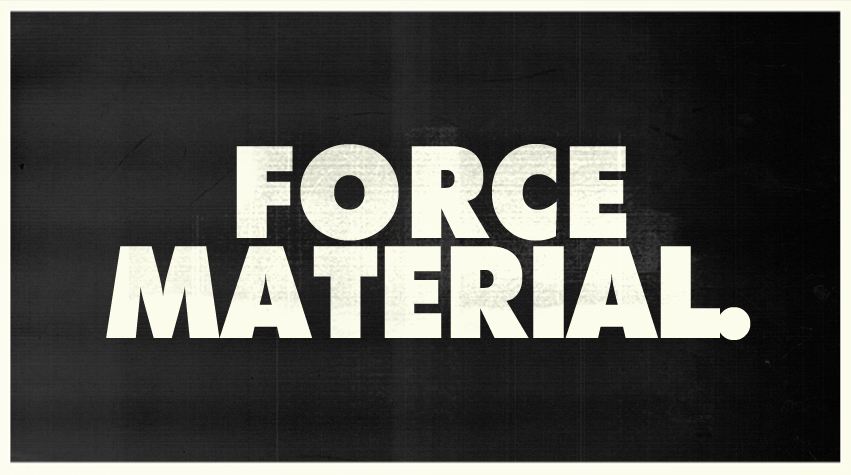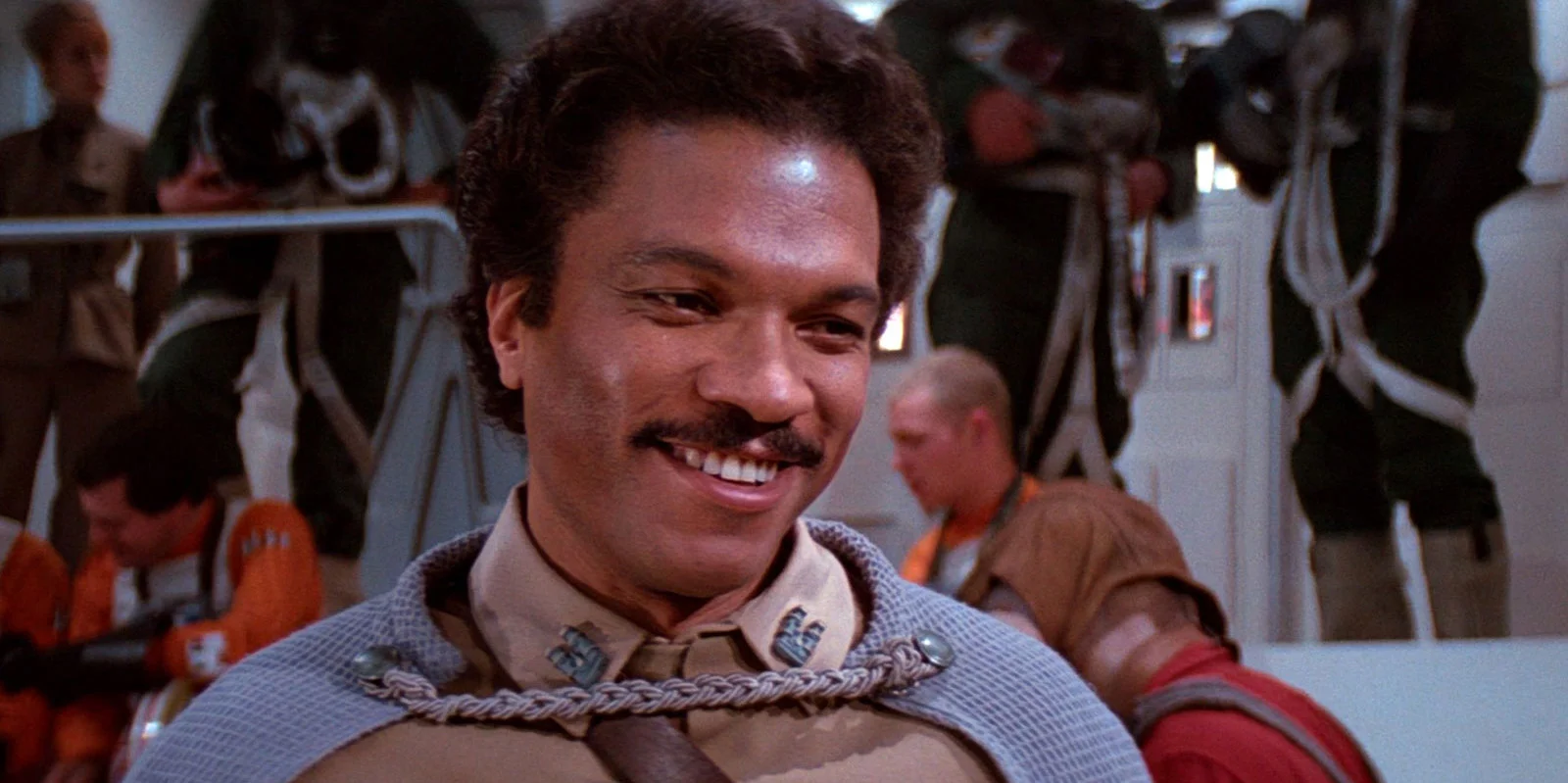The real reason Luke Skywalker has a green lightsaber
The origin of Luke Skywalker's green lightsaber is both simpler and more complicated than you might think.
You might not have given them much thought before, but lightsaber colours are a popular topic of conversation for Star Wars fans this week. (Look, fans have to fill in the 12 months between movie releases somehow, OK?)
EK Johnston's new novel, Ahsoka, has given us a new in-universe explanation for why Sith lightsabers are always red — apparently, the kyber crystals that power the sabers are naturally attuned to the light side of the Force, and won't work for dark side users unless they "dominate" the crystal, forcefully bending it to their will.
This causes the crystals — which have no colour before they are chosen — to "bleed", which results in the distinctive red blades of the Sith.
This only applies to the construction of the lightsaber — if a Jedi turns to the dark side, the saber they already own won't suddenly turn red like a mood ring. Think back to Revenge of the Sith, when Anakin kills a bunch of kids with his lightsaber, which remains blue.
Kyber crystals chosen by Jedi, on the other hand, usually turn blue or green, although in theory, they can be just about any colour.
But much like Mace Windu's lightsaber, which is purple purely because Sam Jackson asked George Lucas if it could be, Luke Skywalker's green lightsaber has more to do with behind-the-scenes developments than with any in-universe explanation.
(Of course, Luke and Darth Vader also had purple lightsabers way before Sam Jackson made them cool, in artist Boris Vallejo's 1980 Coca-Cola/Burger Chef promotional posters for The Empire Strikes Back.)
When Luke Skywalker first ignited his green blade in Return of the Jedi, it must have come as a surprise to fans who paid attention to this sort of thing — Luke's previous lightsaber, which he lost during his battle with Vader in The Empire Strikes Back, had been blue.
Even promotional material for Return of the Jedi depicted Luke with a blue lightsaber, like Tim Reamer's style "A" theatrical one-sheet...
And Kazuhiko Sano's style "B" theatrical one-sheet...
And even the original teaser trailer.
Then there was this theatrical advance one-sheet, which went all the way off the reservation and gave Luke a red lightsaber and Darth Vader a blue lightsaber. Clearly, Drew Struzan likes to live dangerously.
So, why did Luke get a green lightsaber in Return of the Jedi? Surely, in a fictional universe that allocates expansive backstories to random passers-by at dive bars, the filmmakers must have had an elaborate explanation in mind for this change.
Not so much, according to Star Wars guru and Lucasfilm Story Group member Pablo Hidalgo.
When you consider that Luke's lightsaber is only on screen for a relatively short amount of time in Return of the Jedi, and about half of that time is spent outdoors on Tatooine, it makes sense that the filmmakers would pick a colour that would pop against a blue sky — but it's also a pretty anti-climactic explanation.
Pablo's word is bond when it comes to Star Wars factoids like this, but it should be noted that if there's a primary source for this particular truth bomb, it must be fairly obscure — not a single one of the sites I've found that mentions this story cites a legitimate source for it, and it doesn't seem to appear in any of the behind-the-scenes documentaries or books about the film (although I'd be happy to be proven wrong, if anyone knows otherwise).
It doesn't even appear in JW Rinzler's The Making of Return of the Jedi, which is otherwise extraordinarily comprehensive.
I'm not doubting for a second that Luke's lightsaber changed colour because a green one stood out better against a blue sky than a blue one, but Rinzler's book actually does debunk the notion that this was the only reason.
Rinzler's book (a must-have for fans) includes a transcript of a fascinating Return of the Jedi story conference that took place from July 13 to July 17 in 1981.
At one point of the conference, George Lucas, director Richard Marquand, screenwriter Lawrence Kasdan and producer Howard Kazanjian discuss the classic sequence in which R2-D2 fires a hidden lightsaber into Luke's hand and the Jedi first ignites the green blade.
Kasdan: Why don't the guards just shoot Luke? How is he fighting them?
Lucas: Well, part of it would be fun if he could fight them with his lazer sword, except I don't know how he could get his sword in the middle of all this.
Kasdan: But that could be part of his plan — what if Artoo had secluded it in his —
Lucas: That would be a good idea.
Marquand: That is brilliant. I love it.
Kasdan: Luke's plan gets better and better, because Artoo is on the deck and he goes over to this little cubbyhole and ejects the lazer sword.
Lucas: I got an idea you can use with Artoo: What if Luke is about to walk the plank — "Well, so long, old buddy" — and he whistles, as you do in those movies where you whistle for your dog, and then you cut to the top deck of the ship. Artoo is there and a little launcher pops out of his head. Then Luke goes over to the plank, drops, jumps back onto the ship, grabs the sword, and starts fighting. We do the acrobatic thing where he flips himself back up.
Kazanjian: Mark lost his lazer sword, didn't he?
Lucas: He did lose his lazer sword, when his father cut his hand off.
Kazanjian: So whose lazer is he using? Should I have brought it up?
Lucas: You should because that's what everybody will ask.
Marquand: Well, it didn't occur to me.
Lucas: The way I was explaining it in the scripts before was that he made another one. But it's going to be impossible, given the structure of the way the film is now, to explain where that lazer sword came from.
Marquand: It's a line of dialogue later.
Lucas: Well, I don't know if we even need to explain it. The worst thing about that is you get a letter in Starlog magazine. Big deal.
Marquand: He made it, that's the answer!
Lucas: That's not going to drop the audience out of the film. People aren't going to stand up and say, "I just don't buy that, I'm leaving". But you will get lots of letters, so we'll make a form letter explaining that Luke made it.
Kasdan: Maybe it should be a new colour.
Lucas: Yes, it could be totally different looking. We can work that out. But the idea running throughout the whole trilogy is: First he's given his father's sword, because his father lost it in the fight with Ben Kenobi: Ben cut his hand off and Vader fell into the volcano, so Ben then pried the lazer sword out of the hand and kept it for the son. So then what the father did was cut his son's hand and lazer sword off — and that was a way of severing the relationship between father and son. Not only did Luke lose his weapon and was castrated, but at the same time his father split that relationship. Luke was carrying his sword for his father. Now he is not doing that anymore. In this one, he's built his own. He has built his own lazer sword; he is his own man, he is not a son anymore. He is an equal.
It's clear, then, that there is a deeper meaning to the lightsaber being a new colour, even if the particular colour was chosen for a purely technical reason.
Luke's lightsaber was green because it popped against the blue sky — and because, by visually differentiating his new lightsaber from his old one, the filmmakers were able to show us that Luke had become his own man.
One thing’s for sure — now that Luke’s old blue lightsaber has found its way back to him, he’ll be spoiled for choice in Episode VIII.
Force Material is a podcast exploring the secrets and source material of Star Wars with hosts Rohan Williams and Baz McAlister. Listen and subscribe on iTunes, Spotify, iHeartRadio, TuneIn, Stitcher, PlayerFM and Castro; stay in touch with us on Facebook, Twitter and Instagram; and support the show by browsing our range of shirts, hoodies, kids apparel, mugs and more at TeePublic.












